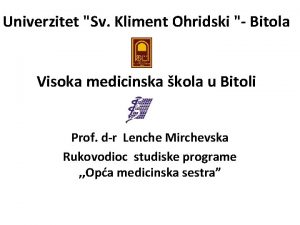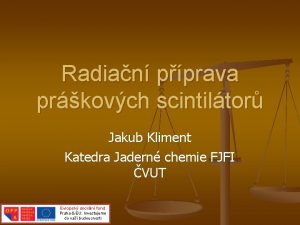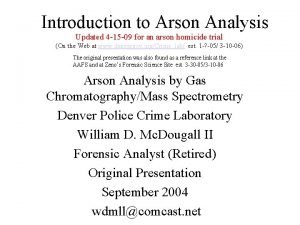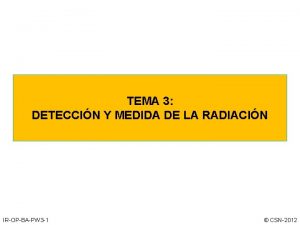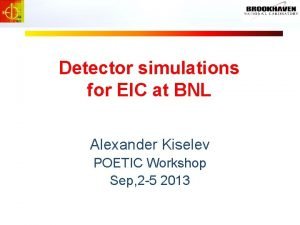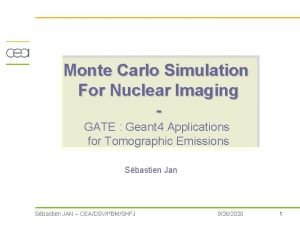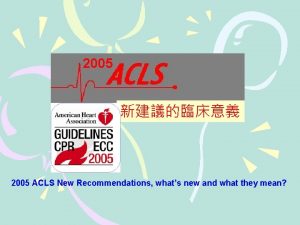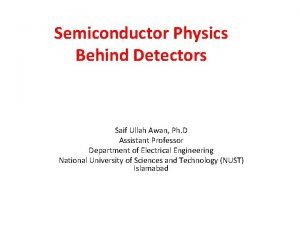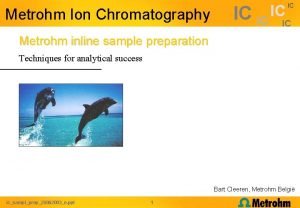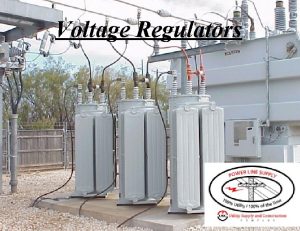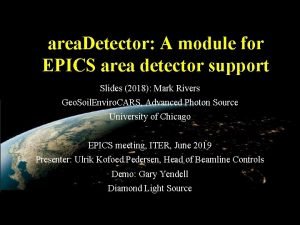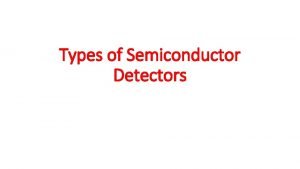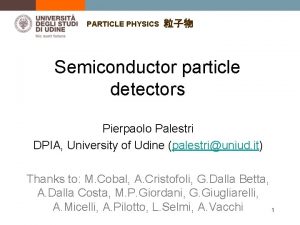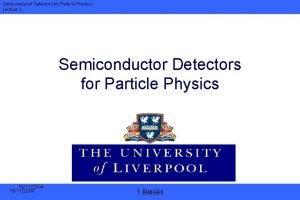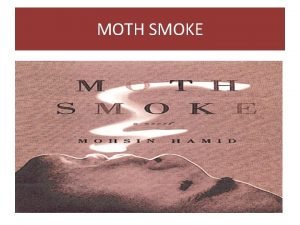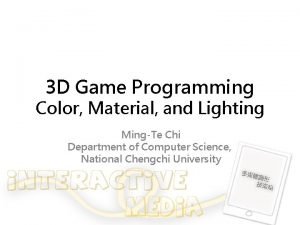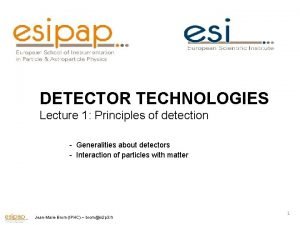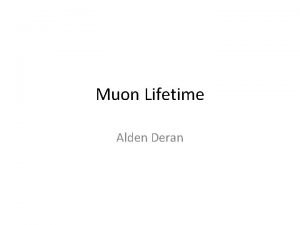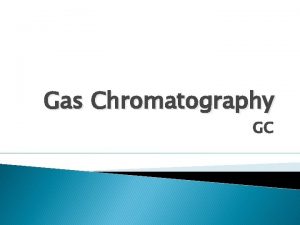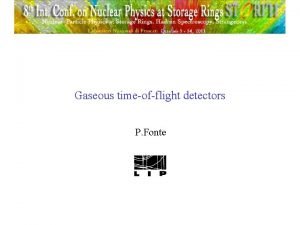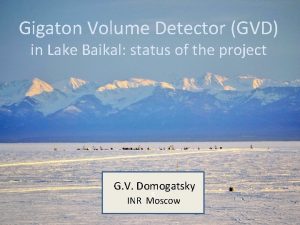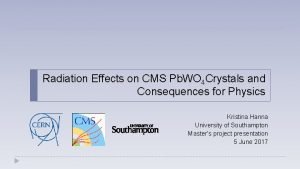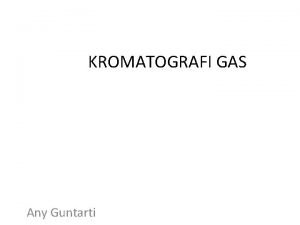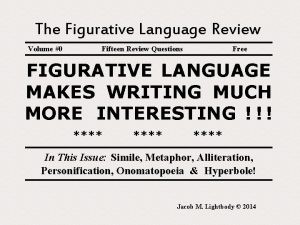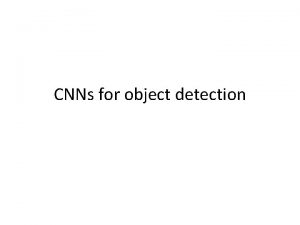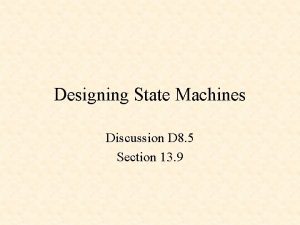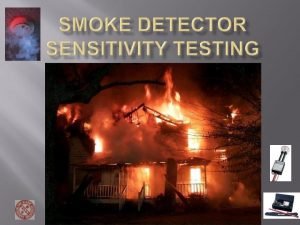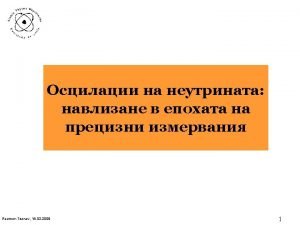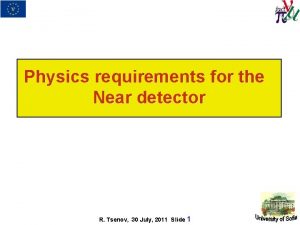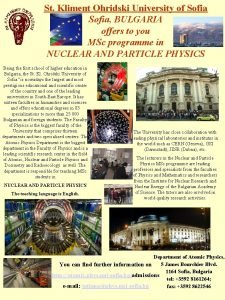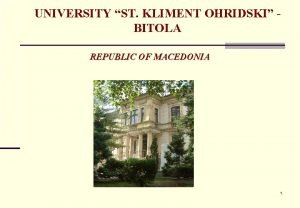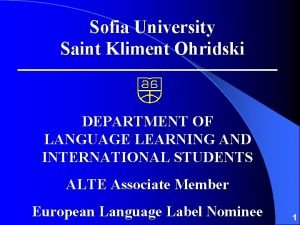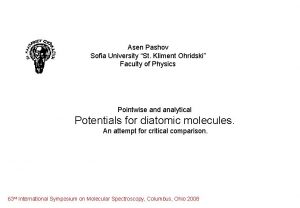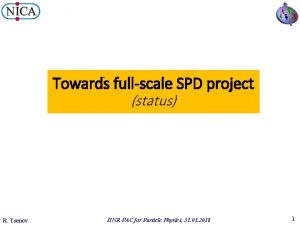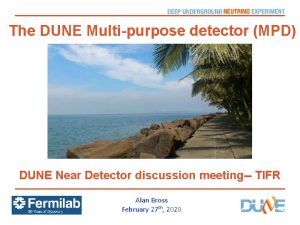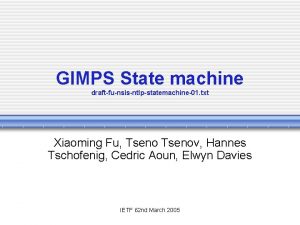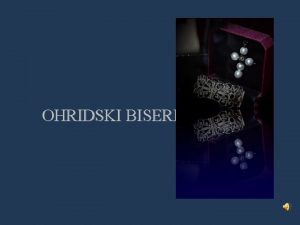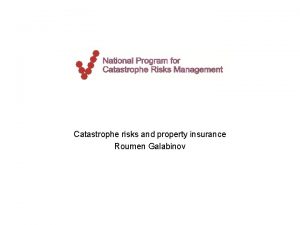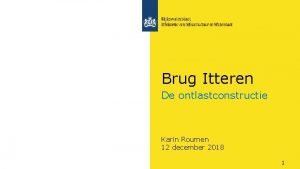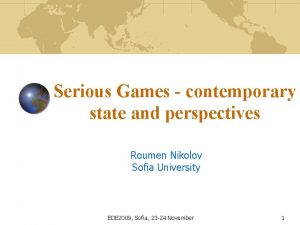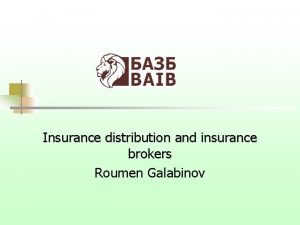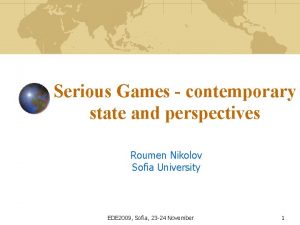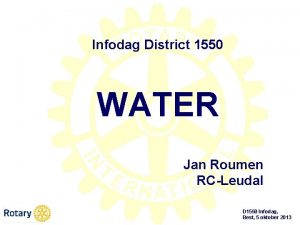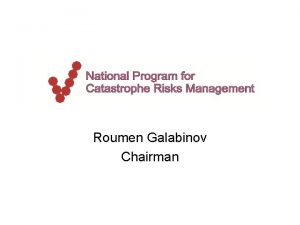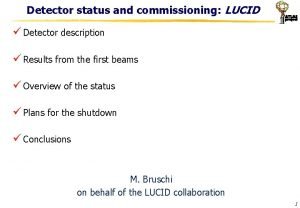Near Detector Status Roumen Tsenov St Kliment Ohridski
































- Slides: 32

Near Detector Status Roumen Tsenov St. Kliment Ohridski University of Sofia. EUROnu Annual Meeting, RAL, 18 -21 Jan 2011 20 -Jan-2011 1

Neutrino Factory Near Detector(s) Eμ = 25 Ge. V ± 80 Me. V Straight section length = 600 m Muon angular spread 0. 5 mrad Neutrino Factory Near Detector aims: • Measurement of neutrino flux with ~1% precision and extrapolation to the Far Detector; • Measurement of charm production (main background to oscillation signal); • Cross-section measurements: DIS, QEL, RES; • Search for Non Standard Interactions (NSI). EUROnu Annual Meeting, RAL, 18 -21 Jan 2011 Can we achieve this by using neutrino scattering off electrons? 20 -Jan-2011 2

Block diagram design (Paul Soler) Near Detector design will probably have three sections: – High resolution detector (Sci. Fi tracker or TRT tracker) tracker for neutrino flux measurement – Mini-MIND detector flux and muon measurement – Vertex detector for charm/tau measurement at the front. ~20 m 3 m n beam 3 m Vertex Detector High Res Detector EUROnu Annual Meeting, RAL, 18 -21 Jan 2011 Mini-MIND B>1 T 20 -Jan-2011 3

Scintillating Fibres Tracker Option being studied by Sofia University group: Rosen Matev (Master student) Yordan Karadzhov (Ph. D student/postdoc) Roumen Tsenov (Senior). EUROnu Annual Meeting, RAL, 18 -21 Jan 2011 20 -Jan-2011 4

Measurement of the neutrino flux with a Sci. Fi tracker Quasi-elastic scattering off electrons to measure the flux: - absolute cross-section can be calculated theoretically with enough confidence; - two processes of interest for neutrinos from μ– decays. for 15 Ge. V νμ. It is ~10 -3 of σtotal(νN) EUROnu Annual Meeting, RAL, 18 -21 Jan 2011 20 -Jan-2011 5

Simulation Near detector flux simulation flux driver GENIE http: //www. genie-mc. org ar. Xiv: 0905. 2517 ROOT file GEANT 4 ROOT file (Simple) digitization Processes included in GENIE Quasi-elastic scattering Elastic NC scattering Baryon resonance production in CC and NC Coherent neutrino-nucleus scattering Non-resonant inelastic scattering (DIS) Quasi-elastic charm production Deep-inelastic charm production Neutrino-electron elastic scattering and inverse muon decay (IMD) Reconstruction C. Andreopoulos et al. , The GENIE Neutrino Monte Carlo Generator, ar. Xiv: 0905. 2517 EUROnu Annual Meeting, RAL, 18 -21 Jan 2011 20 -Jan-2011 6

Neutrino flux through the detector per 1 x 1020 μ- decays EUROnu Annual Meeting, RAL, 18 -21 Jan 2011 20 -Jan-2011 7

Intrinsic and observable angles • Left – zero divergence of muon beam • Right – muon beam with Gaussian spread on θ of 1 mrad EUROnu Annual Meeting, RAL, 18 -21 Jan 2011 20 -Jan-2011 8

νµ flux & IMD muons 0. 5 mrad spread of the muon beam EUROnu Annual Meeting, RAL, 18 -21 Jan 2011 20 -Jan-2011 9

Discriminating variables • muon scattering angle θμ; • • muon p. T 2 Detector requirements: • To provide sufficient interaction rates. This requires a solid detector; • To be able to reconstruct the polar angle of the scattered muon with 0. 5 mrad precision or better. This requires a low Z tracker; • To be able to measure the hadron recoil energy down to values of several Me. V. This requires a precise calorimeter. EUROnu Annual Meeting, RAL, 18 -21 Jan 2011 20 -Jan-2011 10

Detector design • Polystyrene (1. 06 g/cm 3) • A module: absorber & tracker station • 20 modules • Approx. 2. 5 t • A tracker station – horizontal and vertical layers, each has 4 fiber planes shifted with respect to each other • Scintillating fibers – 0. 5 mm width (round or square) • 24000 fibers per station • 5 cm thick absorber, divided into 5 slabs to allow for more precise measurement of recoil energy near the event vertex • We want to be able to measure deposited energy in a slab down to values of several Me. V EUROnu Annual Meeting, RAL, 18 -21 Jan 2011 20 -Jan-2011 11

Tracking capabilities • Rad. length X 0 = 41. 31 cm • Each module is 5. 4 cm thick • RMS(θplane) = 0. 2 – 0. 4 mrad per module • Ultimately, with perfect space alignment of fibers, a position resolution of ~50 µm per station is achievable. EUROnu Annual Meeting, RAL, 18 -21 Jan 2011 20 -Jan-2011 12

Assumptions for digitization and reconstruction • Digitization – Fiber signal is proportional to energy deposition corrected for attenuation and smeared with a Gaussian with σ/E = 25% (too optimistic? ) – Slab signal is proportional to total energy deposition, smeared with σ/E = 5% (optimistic? ) • Muon momentum is measured with an error of 1% (not crucial for the moment, can be relaxed) • Event vertex slab is found with high certainty. EUROnu Annual Meeting, RAL, 18 -21 Jan 2011 20 -Jan-2011 13

Muon polar angle reconstruction • A configuration with 0. 5 mm round fibers (top) and two configurations with 0. 5 mm square fibers with ½ and ¼ fiber width staggering (bottom). • Resolution ~ 0. 5 mrad in all configurations. EUROnu Annual Meeting, RAL, 18 -21 Jan 2011 20 -Jan-2011 14

Background rejection Energy deposition in the first illuminated absorber (5 cm thick) vs. reconstructed muon angle EUROnu Annual Meeting, RAL, 18 -21 Jan 2011 20 -Jan-2011 15

Signal extraction (for 0. 25 x 1020 μ- decays) We can achieve ~1% flux resolution. EUROnu Annual Meeting, RAL, 18 -21 Jan 2011 20 -Jan-2011 16

(not Latest development included in the 2010 EUROν Annual Report, nor in the IDR draft) EUROnu Annual Meeting, RAL, 18 -21 Jan 2011 20 -Jan-2011 17

Background rejection Elaborated cuts : < 1 Me. V (or no) total backward energy deposition < 2. 5 Me. V energy deposition averaged over illuminated slabs < 4 Me. V energy deposition in event vertex slab EUROnu Annual Meeting, RAL, 18 -21 Jan 2011 20 -Jan-2011 18

Background subtraction exploiting anti-νμ interactions • No IMD peak in anti-νμ interactions • Normalize µ+ distribution to µ- one (currently, on what appears to be a linear region) • Subtract • Systematic errors ? (GENIE reliability for very small angles? ) EUROnu Annual Meeting, RAL, 18 -21 Jan 2011 20 -Jan-2011 19

Discriminating on θμ 1 x 1020 muon decays/charge/year Efficiency Purity 84% 75% All 28329 +/168 (0. 6%) EUROnu Annual Meeting, RAL, 18 -21 Jan 2011 Background Signal/Eff 7055 +/25323 +/20 (0. 3%) 202 (0. 8%) MC IMDs 25276 20 -Jan-2011 20

Discriminating on θμ 2*Eμ variable 1 x 1020 muon decays/charge/year Efficiency Purity 84% 80% All Background Signal/Eff MC IMDs 26564 +/- 5513 +/25073 +/- 25276 163 (0. 6%) 18 (0. 3%) 195 (0. 8%) EUROnu Annual Meeting, RAL, 18 -21 Jan 2011 20 -Jan-2011 21

Discriminating on pt 2 1 x 1020 muon decays/charge/year Efficiency Purity 84% 75% All 28276 +/168 (0. 6%) EUROnu Annual Meeting, RAL, 18 -21 Jan 2011 Background Signal/Eff 7004 +/25282 +/20 (0. 3%) 201 (0. 8%) MC IMDs 25276 20 -Jan-2011 22

μ+/μ– ratio below the treshold… EUROnu Annual Meeting, RAL, 18 -21 Jan 2011 20 -Jan-2011 23

Plan for 2011 • μ+/μ– ratio method needs further analysis and we want to go below threshold; • comparison GENIE/data for very small Q 2 and energies up to 25 Ge. V (if any? ) ; • more realistic digitization (different photodetector options and fibre thiknesses); • migration matrices; • ν-e elastic scattering (can we see a signal? ) – reconstruction issues. EUROnu Annual Meeting, RAL, 18 -21 Jan 2011 20 -Jan-2011 24

Transition Radiation Tracker (like Hi. Res. Mν of LBNE) Option to be studied by USA group: Jorge Morfin, FNAL (coordinator) Sanjib Mishra, Uni. SC Roberto Petti, Uni. SC. EUROnu Annual Meeting, RAL, 18 -21 Jan 2011 20 -Jan-2011 25

High resolution magnetised detector (Hi. Res. Mn) Mishra EUROnu Annual Meeting, RAL, 18 -21 Jan 2011 20 -Jan-2011 26

ν-e NC elastic scattering Mishra EUROnu Annual Meeting, RAL, 18 -21 Jan 2011 20 -Jan-2011 27

Near Detector group is expanding… +Fermilab & University of South Carolina group +INFN & University of Naples group +Other volunteers? (we need motivated people!) • • We have had several phone meetings; Regular phone conferences are being planned (morfin@fnal. gov); Mailing list of interested colleagues is being set up (morfin@fnal. gov); Dedicated workshop is being organized: 16 -18 May 2011, Capri island, Contact person: Pasquale Migliozzi (pmiglioz@yahoo. it) Local Organizing Committee: Giovanni De Lellis, Vittorio Palladino, Valeri Tioukov, Pasquale Migliozzi Rush to sign in! EUROnu Annual Meeting, RAL, 18 -21 Jan 2011 20 -Jan-2011 28

Backup EUROnu Annual Meeting, RAL, 18 -21 Jan 2011 20 -Jan-2011 29

Relative units Neutrino flux per unit radius EUROnu Annual Meeting, RAL, 18 -21 Jan 2011 20 -Jan-2011 30

EUROnu Annual Meeting, RAL, 18 -21 Jan 2011 20 -Jan-2011 31

Monitoring of the muon beam polarization The leptonoc interactions of the neutrinos can be used to monitor the polarization of the muon beam in the storage ring. The plot shows the number of leptonic events in 5 m long polystyrene detector as a function of the distance from the neutrino beam axis for three different polarizations of the muon beam in the storage ring and for 1021 muon decays (1 year). It is clear that the variation of the distribution of the events because of the different polarization of the muon beam is much bigger than the statistical errors. EUROnu Annual Meeting, RAL, 18 -21 Jan 2011 20 -Jan-2011 32
 Vms bitola
Vms bitola Kliment ohridski bitola
Kliment ohridski bitola O3n
O3n E-learning sofia university
E-learning sofia university Seahawks tackling drills
Seahawks tackling drills Ion detector
Ion detector Detector de ionización gaseosa
Detector de ionización gaseosa Detector
Detector Ct scan detector
Ct scan detector Defibrillation waveform
Defibrillation waveform Disadvantages of semiconductor detector
Disadvantages of semiconductor detector Ic conductivity detector
Ic conductivity detector Regulator neutral detector
Regulator neutral detector Area detector
Area detector Diffused junction diode
Diffused junction diode Particle detector
Particle detector Diagramming indirect objects
Diagramming indirect objects Semiconductor
Semiconductor Moravec corner detection
Moravec corner detection Moth smoke sparknotes
Moth smoke sparknotes Xx1q
Xx1q Color detector
Color detector Font detector
Font detector Muon detector
Muon detector F(3)
F(3) Detector de fonte
Detector de fonte Gigaton volume detector
Gigaton volume detector Cms detector
Cms detector Dasar pemisahan kromatografi
Dasar pemisahan kromatografi Language
Language Sliding window object detection
Sliding window object detection Sequence detector 1101
Sequence detector 1101 Walter jaeger smoke detector
Walter jaeger smoke detector
